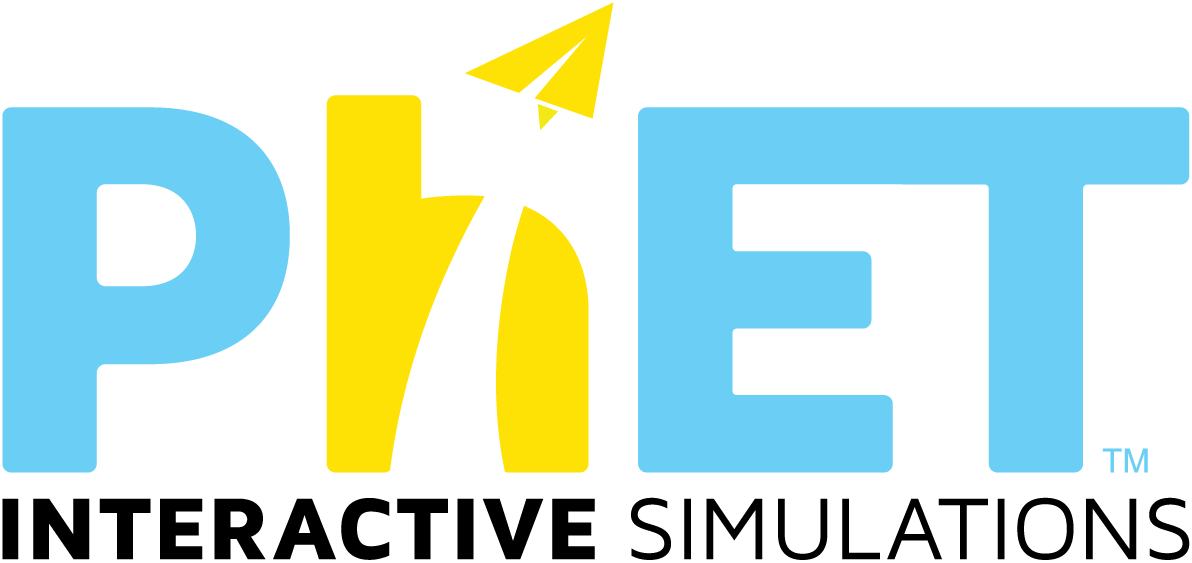341 ta high schoolga mos qidiruv natijalari
Simulyatsiyalar
- Absolyut qora jism nurlanish spektori (HTML5)
- Arifmetika (HTML5)
- Arqondagi to‘lqin (HTML5)
- Atomlarning o‘zaro ta'siri (HTML5)
- Atom modeli (HTML5)
- Ber qonuni laboratoriyasi (HTML5)
- Birlik qiymati (HTML5)
- Bosim ostida (HTML5)
- Diffuziya (HTML5)
- Elektr sxemasi: “O‘zgaruvchan tok” (HTML5)
- Elektr zanjirini yig‘ish:O‘zgarmas tok (HTML5)
- Elektr zanjirlarni yig‘ish:o‘zgarmas tok - Virtual laboratoriya (HTML5)
- Energiya turlari va shaklining o‘zgarishi (HTML5)
- Eng kichik kvadratik regressiyasi (HTML5)
- Faradey qonuni (HTML5)
- Funksiya yasash: Asosiy tushunchalar (HTML5)
- Funksiya yasovchi (HTML5)
- Furye: to'lqinlarni yaratish (HTML5)
- Gazlar:Kirish (HTML5)
- Gaz xossalari (HTML5)
- Gen ekspressiyasi asoslari (HTML5)
- Geometrik optika (HTML5)
- Geometrik Optika: Asoslar (HTML5)
- Gorizontga burchak ostida otilgan jism harakati (HTML5)
- Gravitatsiya va orbitalar (HTML5)
- Guk qonuni (HTML5)
- Hisoblash grafigi (HTML5)
- Ifodalarni almashtirish (HTML5)
- Ishqalanish (HTML5)
- Issiqxona effekti (HTML5)
- Izotoplar va atom massasi (HTML5)
- John Travoltage (HTML5)
- Kasrlar: Aralash sonlar (HTML5)
- Kasrlar:Kirish (HTML5)
- Kasrlar: Tenglik (HTML5)
- Kasr moslashtirgich (HTML5)
- Kasrni hosil qiling (HTML5)
- Kasr sonlar yuza modeli (HTML5)
- Kepler qonunlari (HTML5)
- Kimyoviy reaksiyalarni tenglashtirish (HTML5)
- Kislota-asosli eritmalar (HTML5)
- Kondensatorlar. Asosiy tushunchalar (HTML5)
- Konsentratsiya (HTML5)
- Kuchlar va harakat:Asosiy tushunchalar (HTML5)
- Kulon qonuni (HTML5)
- Kvadrat funksiya grafigini yasash (HTML5)
- Labaratotiya:“O‘zgaruvchan tokda” elektr zanjirlarini qurish (HTML5)
- Laratoriya:“To'qnashuv” (HTML5)
- Markaz va O‘zgaruvchanlik (HTML5)
- Matematik mayatnik (HTML5)
- Mening Quyosh Tizimim (HTML5)
- Moddalarning agregat holatlari:Asosiy tushunchalar (HTML5)
- Moddaning agregat holatlari (HTML5)
- Molekulalar va yorug‘lik (HTML5)
- Molekulaning qutbliligi (HTML5)
- Molekula shakllari (HTML5)
- Molekula shakllari: Asoslar (HTML5)
- Molekula tuzish (HTML5)
- Molyarlik (HTML5)
- Muvozanatlash (HTML5)
- Neyron (HTML5)
- Nisbat va Proporsiya (HTML5)
- Orzudagi elektr maydon
- O‘n yasash (HTML5)
- O‘rtacha Qiymat: Ulush va Muvozanat (HTML5)
- O‘tkazgichning qarshiligi (HTML5)
- pH shkalasi (HTML5)
- pH shkalasi: Asosiy tushunchalar (HTML5)
- Plino ehtimoli (HTML5)
- Proporsiya o‘yin maydoni (HTML5)
- Prujinaga osilgan jism tebranishlari (HTML5)
- Prujinali mayatnik: Asosiy tushunchalar (HTML5)
- Rangli ko‘rish (HTML5)
- Raqamli O‘yin (HTML5)
- Raqamni Taqqoslash (HTML5)
- Raqam qatori: amallar (HTML5)
- Raqam qatori: masofa (HTML5)
- Reaksiyaga kirgan moddalar, reaksiya mahsulotlari va reaksiyadan ortgan moddalar (HTML5)
- Regressiya chizig‘i (HTML5)
- Rezerford sochilishi (HTML5)
- Sharlar va zaryadlar (HTML5)
- Skeyt parkda energiya (HTML5)
- Skeyt parkda energiya: Asosiy tushunchalar (HTML5)
- Sonlar o‘qi: Butun sonlar (HTML5)
- Suzuvchanlik (HTML5)
- Tabiiy tanlanish (HTML5)
- Tenglamalarni o‘rganish (HTML5)
- Tenglamalarni o‘rganish: Asosiy tushunchalar (HTML5)
- Tenglamalarni o‘rganish: Ikki o‘zgaruvchili tenglamalar (HTML5)
- Tortishish kuchi: Asosiy tushunchalar (HTML5)
- Tortishish kuchi. (HTML5)
- To‘gri chiziq grafigini yasash (HTML5)
- To‘g‘ri chiziq grafigini chizish (HTML5)
- To‘lqin interferensiyasi (HTML5)
- To‘lqinlar:Kirish (HTML5)
- To‘rtburchak (HTML5)
- Trigonmetriyaga sayohat (HTML5)
- Tuzlar va eruvchanlik
- Vektorlarni qo’shish: Tenglamalar (HTML5)
- Vektorni qo‘shish (HTML5)
- Yadro yaratish (HTML5)
- Yorug‘likning sinishi (HTML5)
- Yuza modeli algebrasi (HTML5)
- Yuza modeli bilan tanishish (HTML5)
- Yuza modeli ko‘paytmasi (HTML5)
- Yuza yasovchi (HTML5)
- Zanjirning bir qismi uchun Om qonuni (HTML5)
- Zaryadlar va Maydonlar (HTML5)
- Zichlik (HTML5)
- Суюклик Босим ва Оким
- Molecule Polarity
- Alpha Decay
- Balloons and Static Electricity
- Balloons & Buoyancy
- Battery-Resistor Circuit
- Battery Voltage
- Beta Decay
- Buoyancy: Basics (HTML5)
- Capacitor Lab
- Conductivity
- Neon Lights & Other Discharge Lamps
- Eating & Exercise
- Electric Field Hockey
- Equation Grapher
- Estimation
- Faraday's Electromagnetic Lab (HTML5)
- Faraday's Electromagnetic Lab
- Forces in 1 Dimension
- Forces and Motion
- Fourier: Making Waves
- Gene Expression - The Basics
- Gene Machine: The Lac Operon
- Generator (HTML5)
- Glaciers
- The Greenhouse Effect
- Models of the Hydrogen Atom
- Ladybug Motion 2D
- Lasers
- Lunar Lander
- Magnet and Compass (HTML5)
- Magnets and Electromagnets (HTML5)
- Masses & Springs
- Maze Game
- Membrane Transport (HTML5)
- Membrane Channels
- Microwaves
- Models of the Hydrogen Atom (HTML5)
- Motion in 2D
- The Moving Man
- Simplified MRI
- Nuclear Fission
- Number Pairs (HTML5)
- Optical Quantum Control
- Photoelectric Effect
- Plate Tectonics
- Projectile Data Lab (HTML5)
- Projectile Sampling Distributions (HTML5)
- Quantum Coin Toss (HTML5)
- Quantum Measurement (HTML5)
- Radiating Charge
- Radioactive Dating Game
- Radio Waves & Electromagnetic Fields
- Ramp: Forces and Motion
- Reactions & Rates
- Resonance
- Reversible Reactions
- Ladybug Revolution
- Signal Circuit
- Sound
- Sugar and Salt Solutions
- The Ramp
- Torque
- John Travoltage
Mashqlar
- Sound_Inquiry for Middle School
- Molecules and Light-inquiry for high school
- Induction (high school version) (Inquiry Based)
- Using PhET in High School Chemistry- all my activities in pdf
- Speed of a Wave NGSS aligned
- Reaction Rates
- Gas Properties-Inquiry Middle School
- Balloons and Static Electricity for Middle School
- Arithmetic Games (Inquiry Based)
- High School Inclusion Class Density Lab
- Middle School and High School Common Core Alignment Document
- States of Matter for Middle School
- Circuit inquiry for Middle school
- Gas Investigation for Middle School
- Conservation of Energy for Middle School
- Projectile investigation for Middle School
- Pendulum investigation for Middle School
- High School Chemistry 1 level Balancing Equations
- High School Chemistry 1 level: Limiting reagents
- Visual Nucleosynthesis [Basic High School]
- Ramp Middle School Inquiry
- High School Exploratory Lab for Balloons and Static Electricity
- Electric Fields of Dreams for High School Exploratory Lab
- Describing Location and Movement
- Projectile Motion
- Lesson Plan for Teaching Shapes of Molecule
- Energy Skate Park for Middle School(Inquiry Based)
- PhET Energy Forms and Changes Virtual Lab
- Projectile Motion Discovery
- Energy Skate Park Basics
- Induction (college homework version) (Inquiry Based)
- Bunny Blitz
- Middle School Math Sim Alignment
- Simple Pendulum
- Air Resistance Lesson
- Forces and Motion Lesson
- Chemistry Theater
- Energy Skate Park Basics Lesson
- Natural Selection Lesson by UTeach
- Balloons and Static Electricity
- Density Lesson (with Putty Lab)
- Build an Atom
- Gravity and Orbits Lesson
- Experimental Design with Forces
- Hot Air Balloons Lesson
- Geometric figures
- NGSS Alignment Doc for Middle School targeted PhET Sims
- Density Exploration
- Building Fraction Sense Using “Fractions Intro PhET Simulation”
- Conservation of Energy Exploration with Skatepark Physics
- Bending Light Student Worksheet
- Lens Inquiry
- Isotopes
- Molecule Shapes Advanced
- Middle School - Electric Circuits
- Gravity Force Lab
- Investigating Forces and Motion Through Inquiry
- Exploring Stars and Blackbodies
- Experiment to determine relationship between wavelength, frequency and speed
- Ray Diagrams for Concave and Convex Mirrors
- Electromagnetic Induction
- Making STABLE Atoms Lab
- How do PhET simulations fit in my middle school program?
- Two Types of Energy - Mass & Spring
- States of Matter Simulation
- Basics of Electricity
- Pendulum variables
- Reactions and Rates
- Force introduction
- Refraction
- Reactions and Rates: Learning Goals from the design team (Inquiry Based)
- Build a Molecule
- States of Matter Simulation Lab
- Properties of Waves - Lab Guide
- Net force
- Middle School Science
- Conservation of Energy (Energy Skate Park)
- Moving Man II: Acceleration vs. Time
- Moving Man I: Velocity vs. Time Graphs
- Charges and Fields
- Ohm's Law, Kirchhoff's Laws, Resistors in Parallel and Series Lab
- Balancing equation
- Measurements of Density
- THE MOVING MAN: DISTANCE, DISPLACEMENT, SPEED & VELOCITY
- Investigating Net Force
- Middle School - series and parallel circuits
- Collecting and analyzing density data
- Heat it Up
- Mixing paint with ratios
- Using the area model with expressions
- Properties of representations of linear functions
- Color Vision pHet Lab
- Greenhouse effect activity
- My Solar System
- Exploring the Energy Skate Park
- Charges and Charged Objects Investigation
- Moving Man Motion Graph Review
- Magnet and Compass
- Spring Force, Spring Constant and Elastic Potential Energy
- Build An Atom Guided Inquiry
- Introduction to the Gas Laws using PhET simulations
- Quantum Wave Interference, PhET, Worksheet, High Intensity, Problems
- Density-introduction
- Intermolecular Forces and States of Matter - Interactive Lecture Demonstration
- Projectile Motion Lab #2
- Exploring the density of mysterious objects
- Float or Sink? An essay on the density of materials
- Exploring EM Forces
- Wave Basics for Middle Schoolers
- Gas Laws
- Quest for the Coulomb Cup
- MS and HS TEK to Sim Alignment
- DC Circuit Lab
- Projectile Motion Worksheet
- Introduction to the gas laws
- Harmonic oscillator
- Beer's Law Lab: Introduction to Beer's Law
- Comparing the properties of different materials
- Balanced and Unbalanced Forces - What Causes Acceleration
- What Type of Light Bulb Should I buy for my Grandma?
- Atomic Models and Spectroscopy
- Inquiry Activity: Waves
- Pendulum Virtual Lab 2021
- Arbeitsblatt Natürliche Selektion
- It is not a change... it is a crisis
- the advantages of species physical appearances corresponding to living environment
- (BNCC) Comparando as propriedades de diferentes materiais
- Colors, Bunnies and Wolves: does the strongest survive?
- Water Waves in an Electric Sink
- Projectile Motion Lab Report
- conservation of mechanical energy
- Opdrachten bij Reactanten, producten en resten
- Molarity Simulation
- The Simple Pendulum- What affects the Period of the pendulum?
- Computer Simulations as a Tool to Assist Teaching Basics of Electromagnetism (Simulações Computacionais Como Ferramenta Auxiliar ao Ensino de Conceitos Básicos de Eletromagnetismo)
- States of Matter Basics Student Guide
- Sound Waves
- Ohm's Law Lab - Virtual
- Energy Transfer
- PhET: Energy Forms Worksheet
- Force and Motion Basics - Second grade
- Plate Tectonic SIM Lab
- Homework Activity I
- Forces and Motion Basics Interactive Activity
- Pendulum Lab: What Affects the Period?
- PhET Lab States of Matter Basics
- Gravity Lab
- Using the Reactions and Rates PhET Simulation: Concept Development Activity for Kinetics and Rates of Reactions
- Addition and Resolution of Vectors
- The Two-Plate Special
- Energy Forms and Changes
- PhET Interactive Lab on pH
- Projectile Motion
- Bouncing Off the Walls
- Heat or temperature
- Newton's Second Law of Motion
- 'Lectronic Plates
- Pixel Peeping
- Heat or temperature?
- Conservation of Energy - conceptual
- Cavendish Lab
- Greased Lightning
- Wave Interference- Waves (Sound and Light)
- Worlds of Wonder
- Electric Field Hockey Post-Game Analysis
- Introduction to Waves: Liquid Matter, Sound, and Light
- Exploring Chemical Reactions and the Law of Conservation of Mass
- States of Matter - Lab Simulation - student procedures and questions


